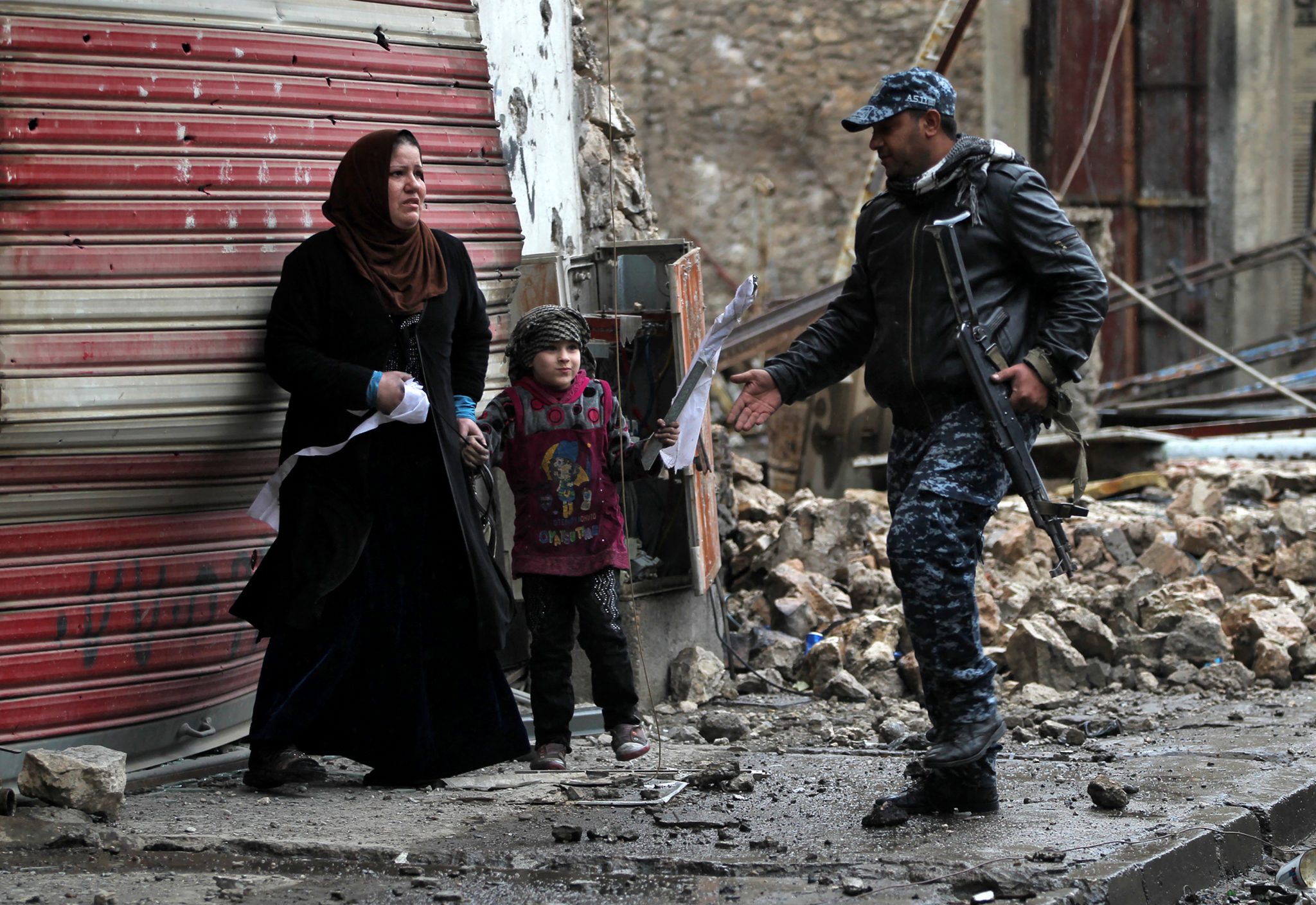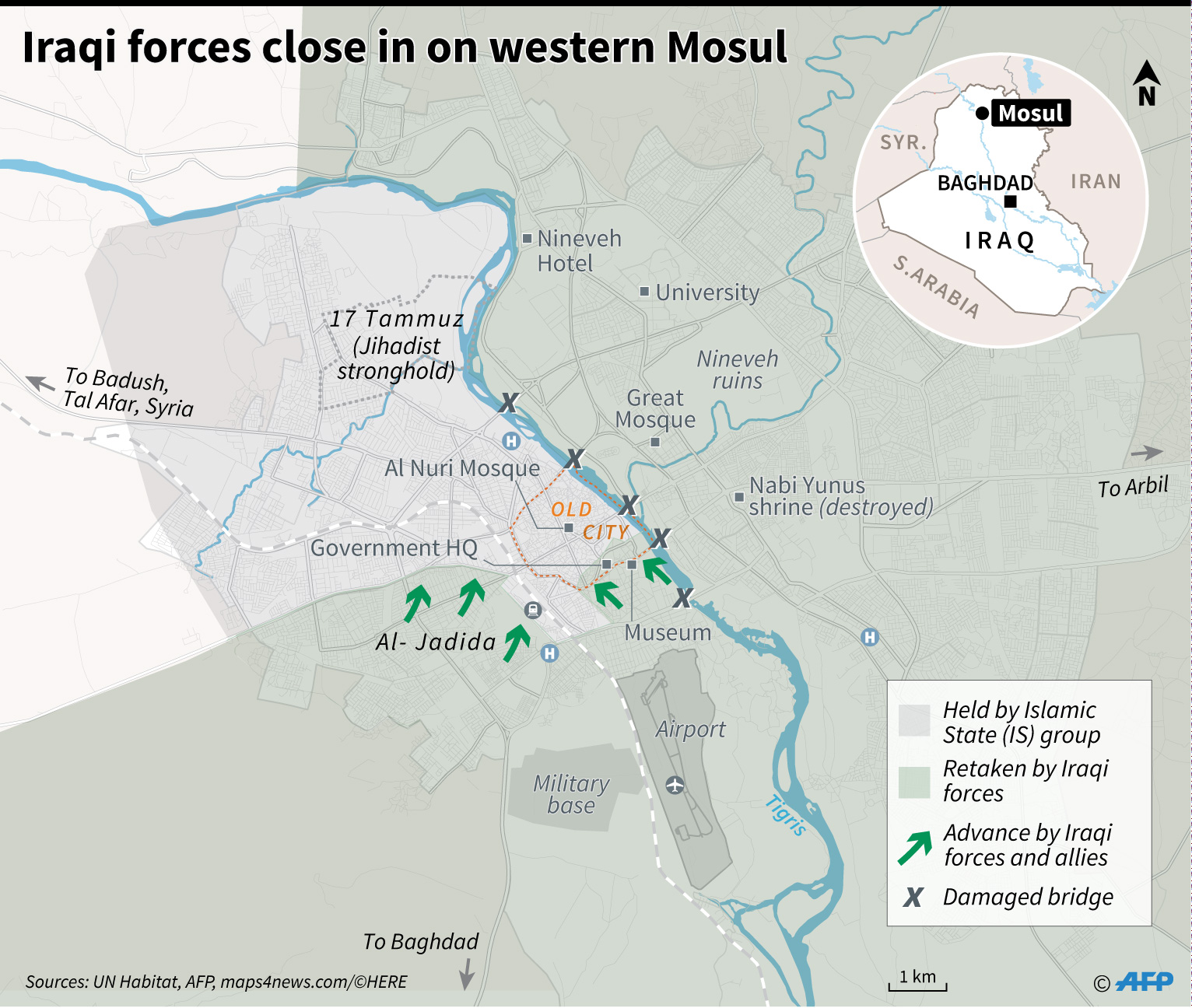
by Tony Gamal-Gabriel
Agence France-Presse
MOUSL, Iraq – Iraqi forces said Monday that they have taken more territory from jihadists and were searching for militants and bombs on the edge of the Old City as they press an offensive in west Mosul.
They are also striking IS with armed drones as part of a renewed push launched on March 5 that has forced the jihadists out of several neighbourhoods and key sites, including the famed Mosul museum.
West Mosul is the most-populated urban area still held by the jihadists, followed by Syria’s Raqa, which is also a key target in the US-led anti-IS campaign.
Iraq’s Joint Operations Command announced additional gains on Monday, saying that forces from the elite Counter-Terrorism Service had recaptured Al-Nafat and Mosul al-Jadida neighbourhoods.
Lieutenant General Raed Shakir Jawdat said that forces from the Rapid Response Division, another special forces unit, and the federal police were working to search and clear territory on the edge of Mosul’s Old City.
The forces are conducting “combing and search operations in the liberated areas of Bab al-Toub, searching for traps and mines and terrorists hiding among the people”, Jawdat said in a statement.
The Old City — a warren of narrow streets and closely spaced buildings where hundreds of thousands of civilians are believed to still be living — could see some of the toughest fighting of the campaign to retake Iraq’s second city.
The commander also said that armed observation drones are being used to monitor and strike IS, as Iraqi forces also targeted jihadist defences and positions with field artillery and rockets.
He did not specify the type of drones being used.
More than 68,000 people have fled west Mosul since February 25, streaming to camps around the city, according to the International Organization for Migration.
But that is only a small fraction of the 750,000 people who were estimated to still be in west Mosul at the time the operation was launched.

No escape for IS
While CTS and Rapid Response are spearheading the advance inside Mosul, Iraqi army forces and pro-government paramilitaries are fighting IS to the west.
Soldiers from the 9th Armoured Division scored an important victory on Saturday night when they cut the last road out of west Mosul, said Brett McGurk, the US envoy to the international anti-IS coalition.
“Any of the fighters who are left in Mosul, they’re going to die there, because they’re trapped,” McGurk told journalists in Baghdad.
“We are very committed to not just defeating them in Mosul, but making sure these guys cannot escape,” he said.
In practice, IS fighters may still be able to sneak in and out of the city in small numbers, but the lack of access to roads makes larger-scale movement and resupply more difficult, if not impossible.
“We now believe that we are killing so many of their fighters that they are not able to replace them. That was not the case even a year ago,” said McGurk, putting the toll for IS leaders at 180 dead.
In Syria, the US-led coalition is backing an Arab-Kurdish alliance known as the Syrian Democratic Forces that is pushing towards the jihadists’ de facto capital Raqa.
“Raqa remains their (IS’s) administrative capital, it’s where we think a lot of their leaders are located, it’s where we think they are planning a lot of attacks around the world,” said McGurk.
Turkish-backed rebels are also advancing against IS in northern Syria, as are government troops supported by Russia.
According to the Syrian Observatory for Human Rights monitoring group, more than 320,000 people have been killed in Syria’s six years of conflict, including 96,000 civilians.
And the United Nations children’s agency said Monday that violence against Syrian children was “at its worst” last year, with the number of minors killed, maimed or recruited into armed groups in 2016 the “highest on record”.








